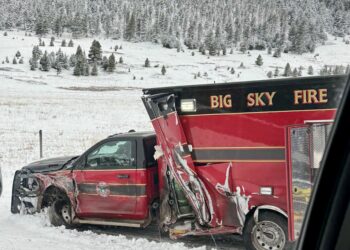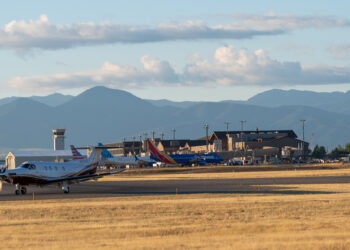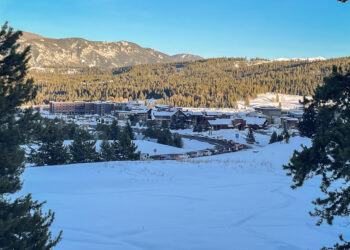By Maria Wyllie
Explore Big Sky Associate Editor
The pheasant is so commonplace in North America today that people may not realize this colorful, grouse-like bird has only been on the continent since the late 1800s.
Native to Asia, the ring-necked pheasant was first introduced as an Oregon game bird in March of 1881, when United States Consul General Owen Denny and his wife Gertrude shipped 60 of them from Shanghai to the Willamette Valley. The introduction was a success, and the birds quickly spread to nearby counties.
With the help of Denny’s political connections, he was able to sway the state to pass legislation in 1892 that banned hunting until the population reached a sufficient number. That year, the first pheasant-hunting season opened in Oregon, and hunters reportedly bagged 50,000 birds in 75 days.
Subsequently, the ring-necked pheasant was introduced to other states across America. Populations thrived in the Midwest’s grassland habitat, as the birds spend the majority of their time on the ground and prefer fields and farmlands with brushy cover. However, they also inhabit woodland undergrowth and some wetlands.
Pheasant numbers reached all-time highs in the mid 1900s before suffering severe population declines, due to changes in agricultural practices in which farmers converted grasslands to croplands or urban development. Populations have since thrived as a result of the United States Department of Agriculture’s Grassland Reserve Program, which helps to maintain grasslands.
Although the birds have short lifespans – it’s rare to get a 3-year old pheasant – they have good-sized broods, or offspring, and are very productive if conditions are favorable.
Pheasant hunting is popular in the Midwest, especially in South Dakota, where the bird was introduced in 1898. Since then, South Dakota has adopted the ring-necked pheasant as its state bird and has become a world-renowned destination for the sport. Only twice in the past two decades has the bird’s annual harvest been under 1 million roosters.
Northeastern and central Montana are also prime hunting ground for pheasants and other upland game birds – an American term that refers to non-waterfowl game birds hunted with pointing breeds, flushing spaniels and retrievers. Central Montana is the state’s most popular pheasant hunting destination, seeing twice as much use compared to other parts of the state, according to Ron Aasheim, spokesman for Montana Fish, Wildlife and Parks. Aasheim attributes this to ideal habitat with lots of grain and cover.
In Montana, pheasant hunting season begins Oct. 11 and ends Jan. 1. Aasheim says the season is set later in the year to give pheasants more time to get their color, thus making it easier for bird identification.
Aasheim expects the season to be an average one this year, falling somewhere between 90,000 – 100,000 roosters harvested. “We’ve heard good reports on pheasant and sharp tail, with partridge off a bit,” he said, adding that there is no way of knowing overall population sizes.
The daily bag limit for pheasants is three and the possession limit is nine. FWP regulations state that it’s unlawful to posses or transport pheasants within Montana unless one leg and foot are left naturally attached for evidence of its sex since it’s illegal to shoot females, which are called hens. For other upland game birds, hunters are required to leave a wing.
“I can tell you that pheasants are by far the most popular upland game bird,” Aasheim said.
Total hunter days for upland game birds are approximately 300,000, whereas hunter days for elk and deer are about 1 million, according to Aasheim. Despite this discrepancy, upland game bird hunters still spend approximately $40 million each year in Montana.
FWP reminds hunters that it is their own responsibility to know hunting regulations, and that ignorance is not an excuse.












